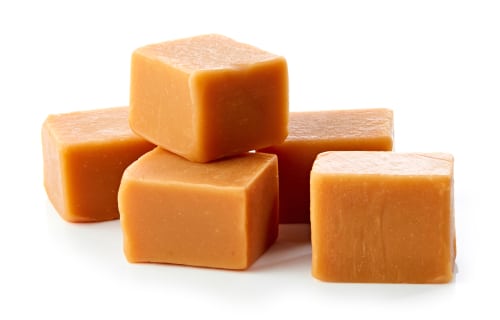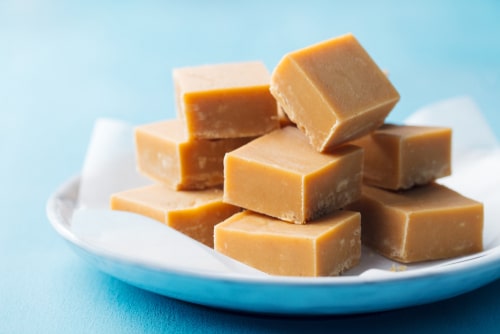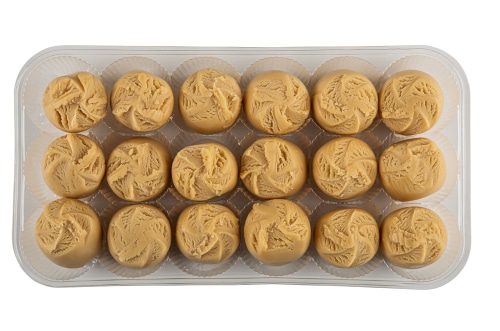Fudge is the perfect treat to indulge in when the sweet tooth kicks in. It is a tasty snack that is always within reach on the counter. However, you may want to store your fudge for the long run so you can have it months down the road. So, that brings up the critical question: can you freeze fudge?
This article offers a full breakdown of all you need to know about freezing fudge. We answer this critical question and walk you through a detailed step-by-step process on how to freeze fudge. You will also understand how long fudge can stay frozen, signs when fudge goes bad, and what to do with your tasty frozen fudge.
Can You Freeze Fudge?

The question can you freeze fudge is common because people are hesitant about the dairy content within fudge recipes. A lot of these recipes utilize sweet, evaporated milk. This ingredient is canned, sits on the shelf, and does not require refrigeration.
So, Can you freeze fudge? Yes you can. If the recipe uses evaporated milk, then the fudge can get frozen or refrigerated safely. It will also retain most of its quality when sitting in the fridge or freezer.
Freezing or refrigerating fudge is ideal for long-term use. It is critical to mention that you do not need to refrigerate or freeze fudge if you consume it within a couple of weeks. If you keep the fudge at room temperature, it will stay fresh. You can always keep it within close reach without it melting.
How to Freeze Fudge
The process of freezing fudge is simple and straightforward. If you know how to pack the fudge properly, the rest will come easy for you. It would also be best for you to pack fudge with a sealed, airtight container or bag. Doing this will block out any moisture or air that will dry out the fudge. A durable container also limits the penetration of harmful chemicals.
Below are step-by-step directions on how to successfully freeze and store your fudge.
Step 1: Cut Fudge into Individual Blocks

For the fudge to freeze effectively, you must cut it into smaller, individual pieces. Dividing the fudge into tiny portions makes it much easier to freeze. Placing the entire block of fudge into the freezer will drag out the defrosting process later.
It also makes it more convenient for you to grab a few portions from the freezer when you require it. You might still wonder can I freeze fudge without cutting it up? If you are confident that you will need the full block, it would be best for you to skip this step.
Step 2: Wrap the Fudge Up
After you cut the fudge into individual pieces, it is time to seal each block properly. You can use plastic wrap to secure the fudge carefully. Because packing is the most critical step in the process, you should take your time to do it correctly. Sealing the fudge will help lock and retain moisture. If you want to prolong the fudge and prevent it from drying out, make sure you wrap it effectively.
If you do not have plastic wrap on hand, there are a couple of other viable options. You can always wrap the fudge in wax paper and cling wrap.
Can fudge be frozen in a bag too? Yes, you can also freeze it properly when sealed within a plastic freezer bag. If you decide to go this route, please ensure that you squeeze out the air before zipping it shut.
Step 3: Select the Ideal Container

Once you properly wrap and secure the fudge, you must now choose a trustworthy container to house the blocks. The ideal container will also play a key role in preserving the fudge, locking on moisture, and preparing the blocks for future use.
When you decide which container to use, prioritize a container that is safe for the freezer. Before you place the container in the freezer, double-check that it is airtight. As mentioned before, strong freezer bags are also an excellent option. You must ensure that you seal the entire bag before freezing. If any air can get in, the fudge will not freeze correctly for future use.
Step 4: Seal, Then Label
When it is time to put the container in the fridge, you should prepare a secure, spacious spot. You do not want to jam it into a tight space. Putting the container in a place with a stable temperature will help you optimize the freezing process. You also want the fudge to be in an accessible location for when you grab a block later!
Finally, do not forget to label the fudge. Use a permanent marker to write the date, quantity, and flavor so that others know the necessary information about the fudge. If you use a plastic bag, you can write it directly on the outside. For sealed containers, you can list out the information on a piece of tape and stick it on the exterior.
How Long Will Fudge Last in the Fridge or Freezer?

When you store the fudge, it would be best to not wait longer than six months. Although the fudge should remain edible for up to a full year, the best results start to go away after the six-month mark. The most critical component to remember is to keep the container or bag as airtight as you can. Doing this will keep the moisture locked in and preserve the fudge for as long as possible.
How to Tell If Your Frozen Fudge is Bad
Fudge does not spoil in the same way as traditional baked goods. Most foods will rot or mold as they sit in the fridge or freezer for a while. As fudge gets older, the taste and texture will start to deteriorate. Although it may still be safe for you to indulge, it will not be the best eating experience.
There are many visual clues to watch out for to evaluate if fudge goes bad. We know that it is not good for the fudge to get exposed to air. When this unfortunate event happens, the surface will begin to dry out, crack, and degrade.
Cracking and crumbling around the edges will not be the worst thing in the world. However, the texture will not feel good to the touch, and it will probably impact the taste negatively. The more aged your fudge becomes, the drier and crumblier the texture will be. If you see bigger cracks in the surface of the fudge, it is going bad and should not be eaten.
Moisture can also affect the fate of your fudge. When too much water and moisture gets exposed to the fudge, the blocks will spoil much quicker. A little bit of moisture on the outside will not cause major problems. However, the fudge should not be consumed if it becomes overly soggy or mushy.
Lastly, if the fudge looks oily and becomes extremely hard on the surface, you should not eat it. These signs do not automatically point to food safety issues, but the taste will be awful. The best thing for you to do is closely examine the fudge when you eat it, especially after 4-6 months of it sitting in the freezer or refrigerator.
What to Do with Frozen Fudge
How you use your fudge after freezing is simple and depends on what you like. If you prefer the fudge to remain cold, then you do not need to let it thaw. However, for ease of use, it may be best to allow it to thaw out.
When you allow your fudge to thaw, there is something essential to remember. We do not advise you to thaw your fudge at room temperature. It would be wise to position the fudge in the refrigerator and let it thaw throughout the night. That way, you can indulge or use the fudge the next day and enjoy it the most. After you place it in the fridge, you should keep it in there from that moment on.
While thawing the fudge in the fridge will require you to wait longer, it is the best way to keep the fudge tasting fresh. If you thaw the fudge outside the fridge, condensation will build upon the surface. Although the fudge will still taste well if you let it sit on the counter, fridge thawing will produce the best results.
If you are looking to have fun with the fudge, see below for some potential recipe ideas for frozen fudge:
Final Wrap Up
The process of creating fudge can be complex, but you can produce many amazing flavors like chocolate, vanilla, mint chocolate, caramel, turtle, chocolate peanut butter, chocolate cherry, and much more. Now that we answered the vital question of can you freeze fudge, you now have the tools to preserve it and retain its wonderful taste.
It starts with your ability to wrap, package, and closely monitor the quality of your fudge. You deserve to indulge in the tastiest treats, so follow the steps provided and enjoy!







